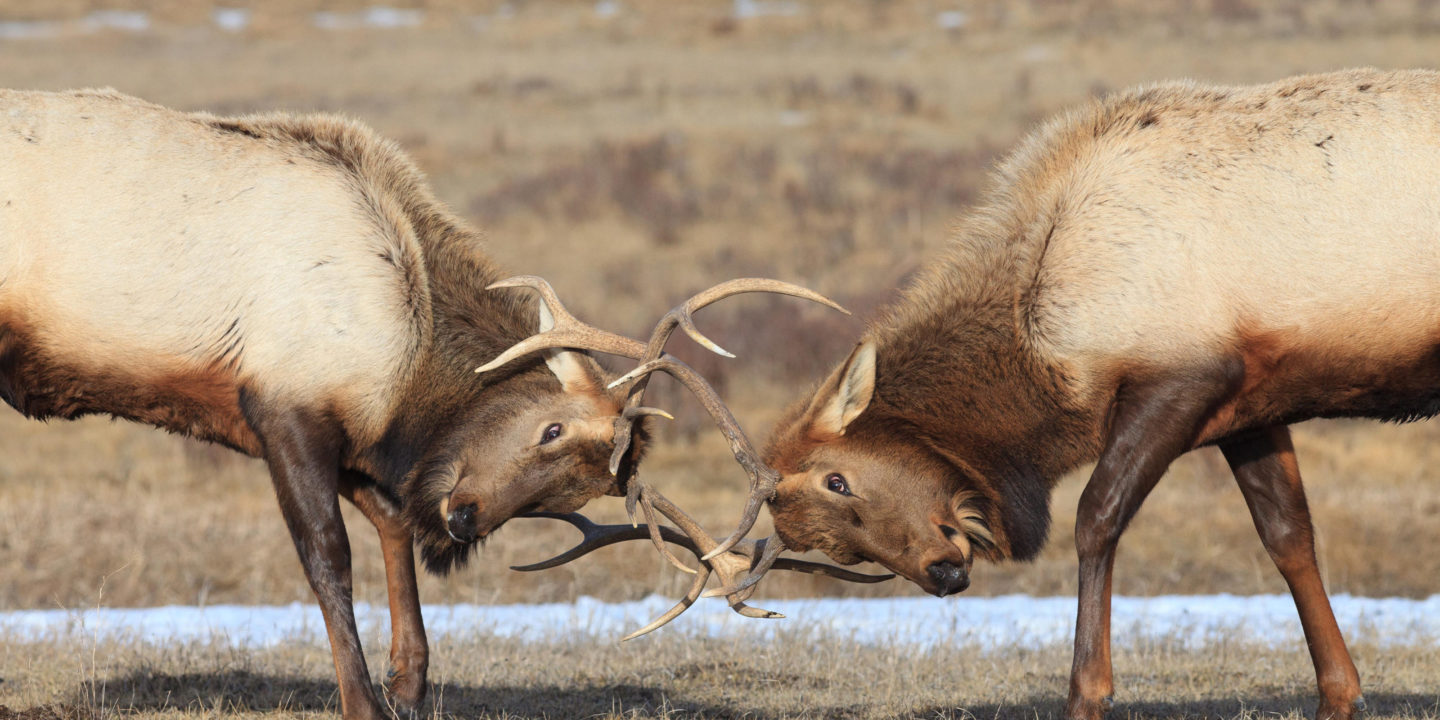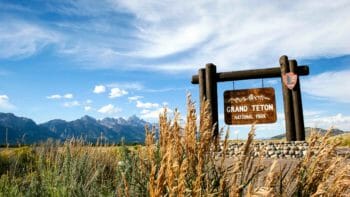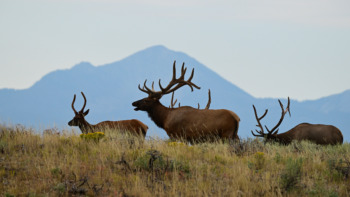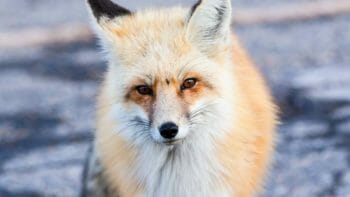Just south of Yellowstone National Park is a geological treasure of mythical proportions. Where jagged alpine peaks pierce wide open skies, where rich valleys harbor a plethora of wildlife, where people journey from all over the world to witness such a wondrous natural landscape. These are just an example of the grandiose words that could be used to describe Grand Teton National Park- which entirely lives up to such distinction. Established in 1929, this region is a worthy addition to the National Park System and merits exploration by all. One of the best ways to acclimate yourself to this beautiful subrange of the Rocky Mountains is to take a Grand Teton National Park Tour with Jackson Hole Wildlife Safaris that will showcase nature’s bounty in its entirety and provide you a valuable learning experience. There is no wrong time of year to visit– from the simmering summers where verdant plains abut steep rocky pinnacles, to the snow covered valleys and flocked pines of the winter months. At all times in between, nature and wildlife is abundant and bustling.
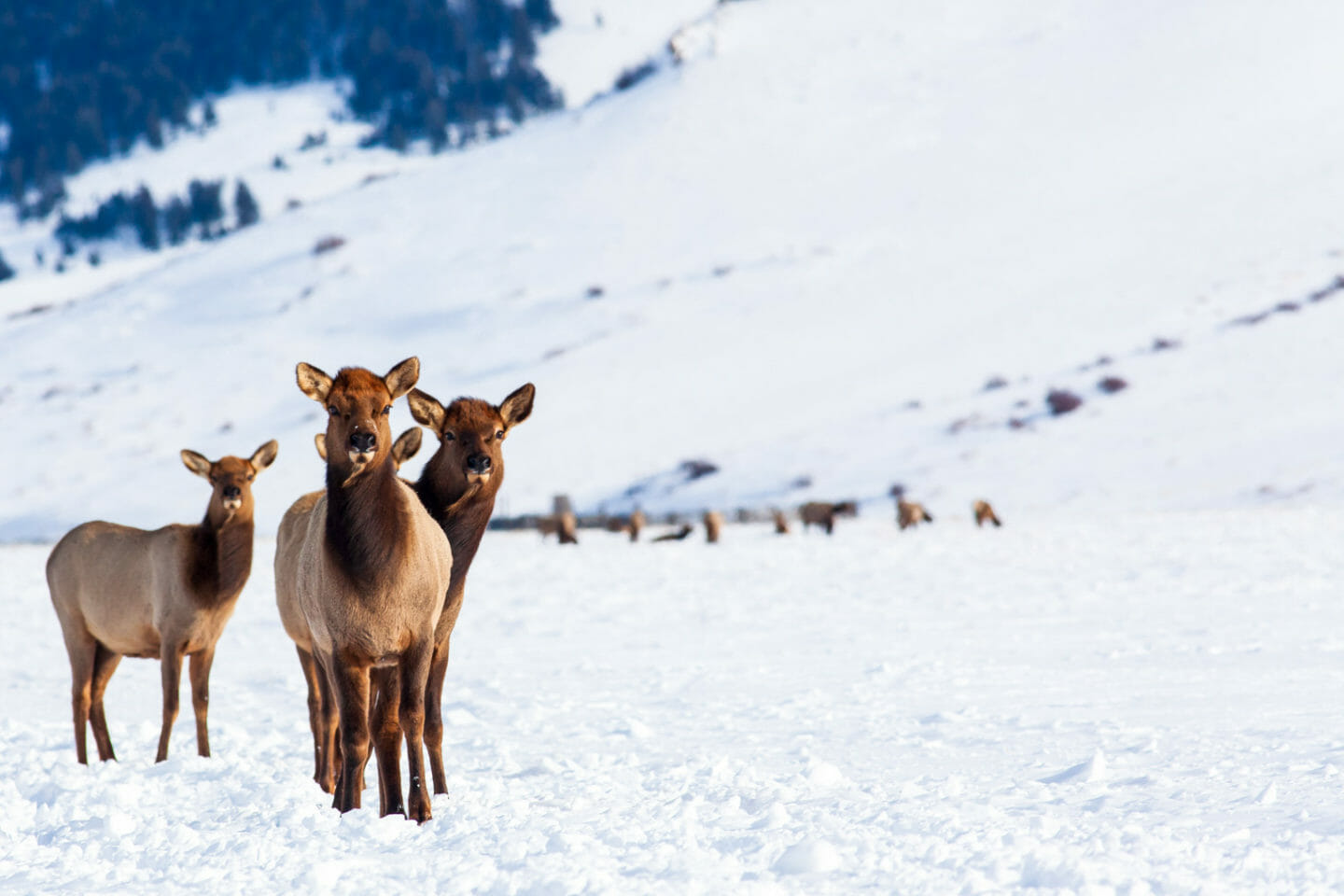
Grand Teton Types of Wildlife
Habitats within Grand Teton National Park range from the rocky embankments of meandering rivers to seemingly prosaic sagebrush steppes which give way to densely forested hills as elevations increase. On all sides of Jackson Hole this varied terrain is surrounded by exposed, high alpine craggy peaks, with the iconic Teton Range rising along the western boundary of the valley. Such geographic diversity combined with dramatically different seasons begets the unique assortment of flora and fauna that have evolved to survive in their respective habitats throughout the park. Some animals that call Grand Teton home weigh hundreds, perhaps even thousands of pounds, while others only 8 ounces. Those larger species can be easier to spot and are usually the most sought after by visitors, however that depends on the season and how keen an eye you have- which is one of many benefits to having an experienced guide to help!
Bison are the largest herbivore in Grand Teton National Park, weighing potentially as much as 2,000 lbs. When seen they are often busy grazing, this species can actually consume as much as 20 lbs of vegetation per day! For this reason they prefer open grassland habitats where there is ample sunshine to support the growth of grasses and other nutritious plants. In the prime of summer this species can be found nearly anywhere along the valley floor of the park, sometimes gathered by the hundreds in open fields or perhaps just a solitary bull traversing through the sagebrush or sparsely forested terrain in search of finer foraging. When water becomes scarce bison will often congregate near rivers, ponds, creeks or reservoirs. Once winter returns to the valley and those grasslands begin to resemble more of an arctic tundra, these powerful mammals will utilize their large heads to sweep snow away from food sources underneath. Segments of the bison herd in Grand Teton will either remain near their summertime ranges while others migrate south towards the National Elk Refuge where the elevation is lower and thus less snow will obstruct their feeding.
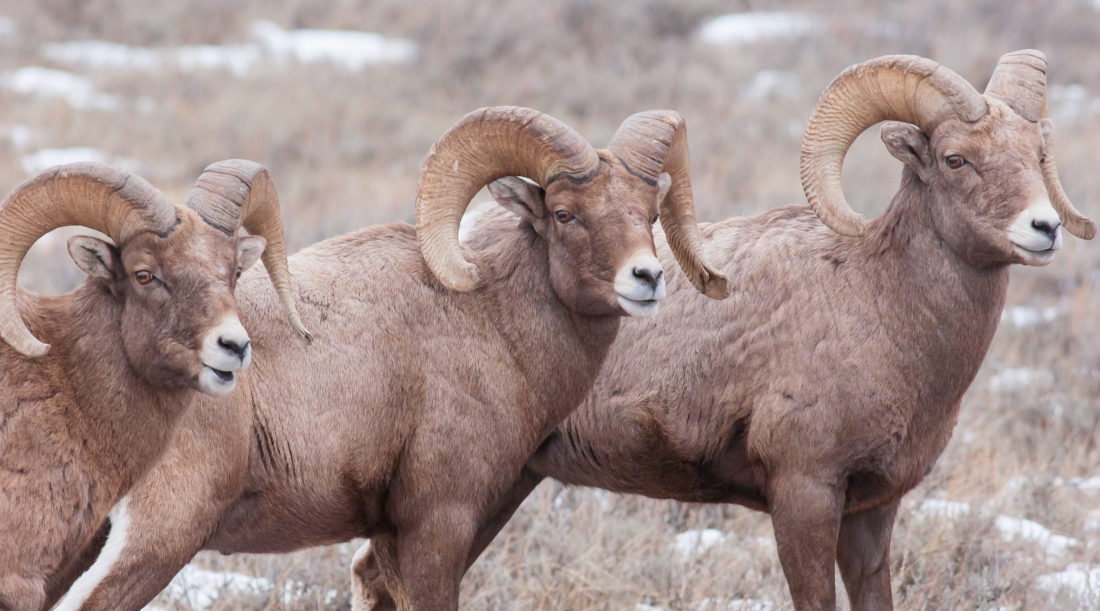
While Elk and Moose are herbivores like the Bison, they will occupy a greater variety of habitat throughout the seasons. In the dead of winter elk can be found by the thousands in the National Elk Refuge, which lies just north of downtown Jackson. This is a natural part of their winter range which is being actively preserved to benefit the species. With spring, the snow begins to recede and most of the 8-10,000 elk that inhabited the refuge will begin dispersing into higher elevations, some even migrating as far north as Yellowstone National Park. Early summer will find herds of cow elk selectively finding places with plenty of shrubbery to have their calves, and when those little ones can keep up with the adults they will push higher into the mountains where temperatures are cooler and the food is ample.
Moose usually are not seen in the National Elk Refuge in winter, but they might be spotted around town! Moose have a unique diet of more woody vegetation, like the twigs of trees or the rough stems of bitterbrush. Throughout the year they are often found near riparian habitats, especially in the heat of summer. This large ungulate will wade or even dive underwater to seek out aquatic plants to feed on or simply to cool off. If not submerged they will bed down in the shade of thickets to nap or digest, which can make them exceptionally difficult to spot. Come fall both moose and elk will return to open sagebrush steppes of the valley floor for the exciting rutting season.
At the top of the food chain are the keystone species that many visitors specifically travel to the Greater Yellowstone Ecosystem to witness- wolves and bears. Being apex predators these species do not often occur in high concentrations, resulting in them being difficult to find when there are hundreds of thousands of acres through which they could be roaming. Winter might be one of the most prime times to seek out the gray wolf in Jackson Hole. The immense gathering of elk on the National Elk Refuge during the snowiest months of the year entice these large canines with ample hunting opportunities. As those elk migrate from the refuge and return to the mountains, the wolves will typically follow their preferred prey and become much more elusive.
Both black and grizzly bears, on the other hand, hibernate the winter away and might not be seen until May. They emerge ravenously hungry from nearly five months of consuming nothing, especially if a sow (female) happened to have had cubs during hibernation. Those cubs will nurse in the den and continue to do so for potentially the next two years. This demand on the mother bear makes it vital for her to find the nutrition she needs to raise her cubs. Black and grizzly bears in spring will be foraging at lower elevations where there is less snow, and much of what they eat will be plant matter unless they get the opportunity to hunt or scavenge meat from an unlucky animal. Similar to the wolf, as temperatures warm, bears will begin moving into higher elevations and become difficult to spot from the valley. By fall these mammals are already preparing for hibernation. Bear will enter a stage known as hyperphagia, in which their body will constantly demand food in order for them to build up a healthy fat layer to last through winter. During this season the prime food source are the ripening berries found on choke cherry, western serviceberry and hawthorne shrubs- so if you see berry bushes keep an eye out for a bear!
Smaller year round residents of Grand Teton National Park include red fox, coyote, weasels, beavers, otters, bald eagles… and honestly so much more. Winter is often a beautiful time to observe fox and coyotes, as they will be ranging about on top of deep snow banks listening for potential prey underneath. Even river otters, with their superior insulating fur coat, can still be seen slipping around on the icy embankments of pond and lakes. Seasonally eagles will be patrolling waterways in search of fish or waterfowl to eat, or even gathering in trees by the dozen if a tempting carcass is present.
Then there are the vast array of migratory species in the Greater Yellowstone Ecosystem that only seasonally reside in Jackson Hole. Herds of bighorn sheep will migrate into the National Elk Refuge in winter to escape the brutal weather of the mountain tops. Wintertime will also attract flocks of trumpeter and tundra swans, who fly south from the Arctic region of North America in search of ice-free waterways. One surefire sign that spring has sprung in Jackson Hole is appearance of mountain bluebirds, western meadowlarks and a variety of hummingbirds. The quiet, snow muffled landscape of winter seemingly comes to life with the lovely songs of these migratory birds. Pronghorn are an iconic summer arrival in Grand Teton, they travel nearly 250 miles to the southeast to avoid the extremity of winter in the park. By May they begin returning to the valley and will occupy open sagebrush steppe and grassland habitats, often seen grazing alongside bison.
No matter the season, the expansive variety of wildlife throughout Grand Teton National Park is evident. While all these species may not always be obviously roaming about, the honed eye and insight that our professional guides can provide might increase your chances of finding many of them!

From dawn to dusk, from the top of the Teton Mountains down to the lakes and streams, the seemingly Jurassic ecosystem is beaming with rare animal life. Grand Teton National Park tours will give you the chance to explore different areas of the national park that will take you out of your element and into a world where large game like elk, deer, and bison forage and range; where predators like wolves and scavengers like coyotes lurk around every corner; and where large-winged birds and foul take to the lakes and sky.
In the winter time, you can have the rare experience of taking a wildlife safari into the middle of the largest wild elk herd in North America. Located in Jackson Hole, Wyoming, the National Elk Refuge is also home to iconic species of animals including bison, wolves, trumpeter swans, bald eagles, bighorn sheep, and cutthroat trout. This expansive glacial outwash plain is rich in minerals and flowing creeks that captivate outdoor and wildlife enthusiasts and photographers from all over the world.
The Grand Teton ecosystem wouldn’t be the same without its notorious wolves. Unlike most animals in the Greater Yellowstone Ecosystem (GYE) the gray wolf is nearly impervious to winter conditions and has perfected the art of hunting, foraging, and mating during the most inclimate times of the year. Yellowstone and Grand Teton National Park are home to this species of wolf that claims this expansive territory all year round.
Unlike its canid cousin, the Grand Teton bears sit out the winter by hibernating as early as December and coming out of winter slumber as late as June. Grizzly and black bears will usually give birth during their hibernation period, which means adorable, fuzz-covered cubs can be seen around the parks during the spring and summer months. With the winter melt comes a burst of new life across the land, which gives elk, moose, bighorn sheep and bison the sustenance they need to continue the circle of life. The more temperate months are a perfect time to tour the geological sites and gain an understanding of their rich history and impact on the environment.
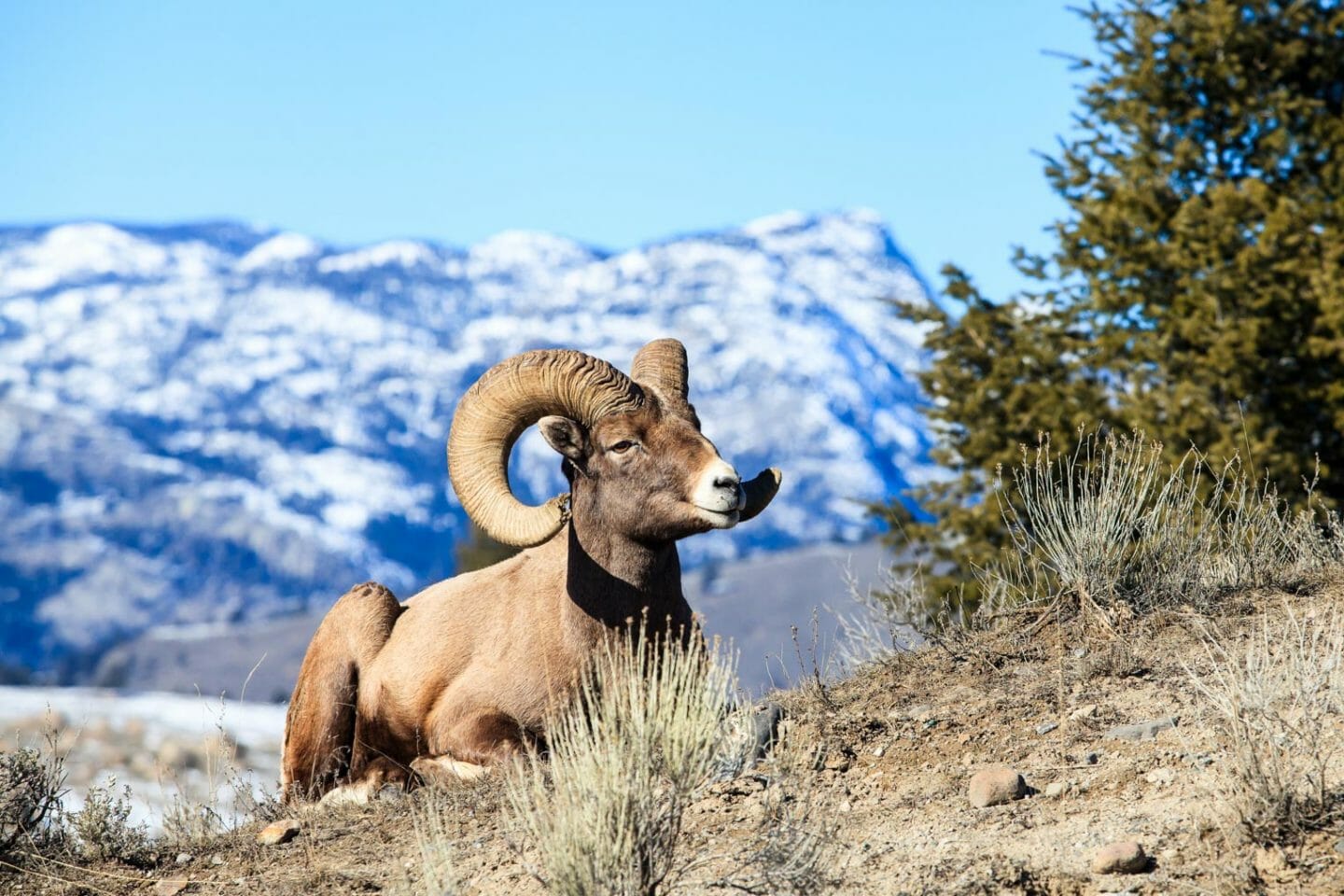
Grand Teton Wildlife Tours
With such a plethora of wildlife species that can be found both inside and around Grand Teton National Park, which includes over 300,000 acres of space that these animals can be distributed across, along with the factor that each season affects where they might be, what is possibly the best way to make the most of your time when visiting Jackson Hole? How about utilizing the expertise of our professional guides with Jackson Hole Wildlife Safaris – our guides not only have valuable insight into the most prospective regions of the park to seek out wildlife depending on the time of year, but most importantly have a true personal passion and interest in observing these fantastic beasts and sharing that experience with guests.
Jackson Hole Wildlife Safaris offers tours year round in Grand Teton National Park, with summer and winter trips each being wonderfully unique. High power optics will always be provided, both in the form of binoculars for each guest and one spotting scope per each tour vehicle. These tools are essential when it comes to observing wildlife at safe distances without affecting their natural behaviors.
There are three different tour options with Jackson Hole Wildlife Safaris: a morning or evening half day (4 hour tour) and a full day (8 hour) tour. The length of the trip is the major difference, snacks and water are provided with every tour and lunch only being included with the full day. In the summertime the majority of roadways in Grand Teton National Park are open, allowing for a surplus of regions to explore in the park while on the quest to find wildlife. Come wintertime the roadways at the western side of Grand Teton will close to vehicle traffic, which may seem detrimental to the cause of searching for animals, but is truly not an obstacle. During this time of year Jackson Hole Wildlife Safaris expands its reach outside of Grand Teton National Park to also include the National Elk Refuge. Not only will the refuge be available to access by vehicle, but included in the winter Best of Jackson Hole full day tour is a horse drawn sleigh ride which allows visitors to potentially get some of the closest views of hundreds of wild elk imaginable.
Come to Jackson, WY and make the most of exploring this wildlife rich region!
The best tours are out of Jackson Hole, where expert tour guides have complete knowledge of the land and habitats of the wildlife to give travelers the best experience without compromising safety. Going on a Grand Teton tour, no matter the season, allows visitors to see firsthand how the changes in climate impact the wildlife and plant life in the region. Tourists will see a new side to the landscape from the smallest creatures to the tallest mountains for an experience they will treasure for a lifetime. Book your Jackson Hole Wildlife Safari tour today.

